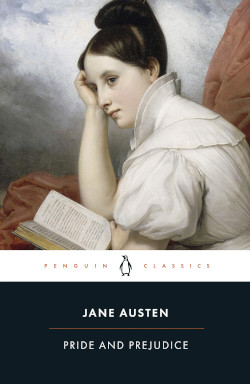Jane Austen, Pride and Prejudice, 1813

As an icon of the literary canon with a dynamic afterlife as a contemporary popular-culture classic, Jane Austen’s Pride and Prejudice is an exemplary ‘crossover’ phenomenon. It is both a bumptious fairy tale of romantic wish-fulfillment and the initiatory modern novel of social realism and observation. In its supreme self-reflexiveness, Pride and Prejudice is also a parable of style and aesthetic refinement, honing its ironies and its cool omniscience through a world of social detail and a new kind of psychological interiority that was seen to ‘proclaim a knowledge of the human heart’ (to quote Austen's contemporary Walter Scott).
A masterpiece both of indirection and assured comic exuberance, Pride and Prejudice is the most canonical and popular of Austen’s novels – the carriage that transported the divine Jane along her breezy, inexorable way to 21st century world domination. Yet its relentless comedic spirit has been seen to hold it back, not least by Austen herself, who found it ‘too light & bright & sparkling’: ‘it wants shade’, she wrote to her sister, Cassandra.
The great critic Mary Lascelles went so far as to claim that P&P’s ‘playfulness’ marks both its ‘charm’ and its ‘limitations’. 'Limitations' is not an idea we tend to associate with great books, much less those written by Jane Austen – but this lecture explores that idea by considering Pride and Prejudice in relation to Austen’s larger oeuvre and what she accomplished in her later work, as it moved to darker notes and more discordant emotional poignancies and satiric asperities. It draws out those moments in Pride and Prejudice that veer toward shade and that mark Austen’s particular art of seeing in the dark beyond the light and bright and sparkling. It will consider, too, what was lost in that later work that can only be found in Pride and Prejudice and its re-reading.

Professor Clara Tuite
Clara Tuite is Professor of English at the University of Melbourne, where she teaches and researches literary Romanticism and the history of the novel. Her work as a literary historian focuses on early 19th century literature and its historical, cultural and social contexts and ongoing reception. Her most recent book, co-authored with Claudia L. Johnson, is 30 Great Myths About Jane Austen (2020).